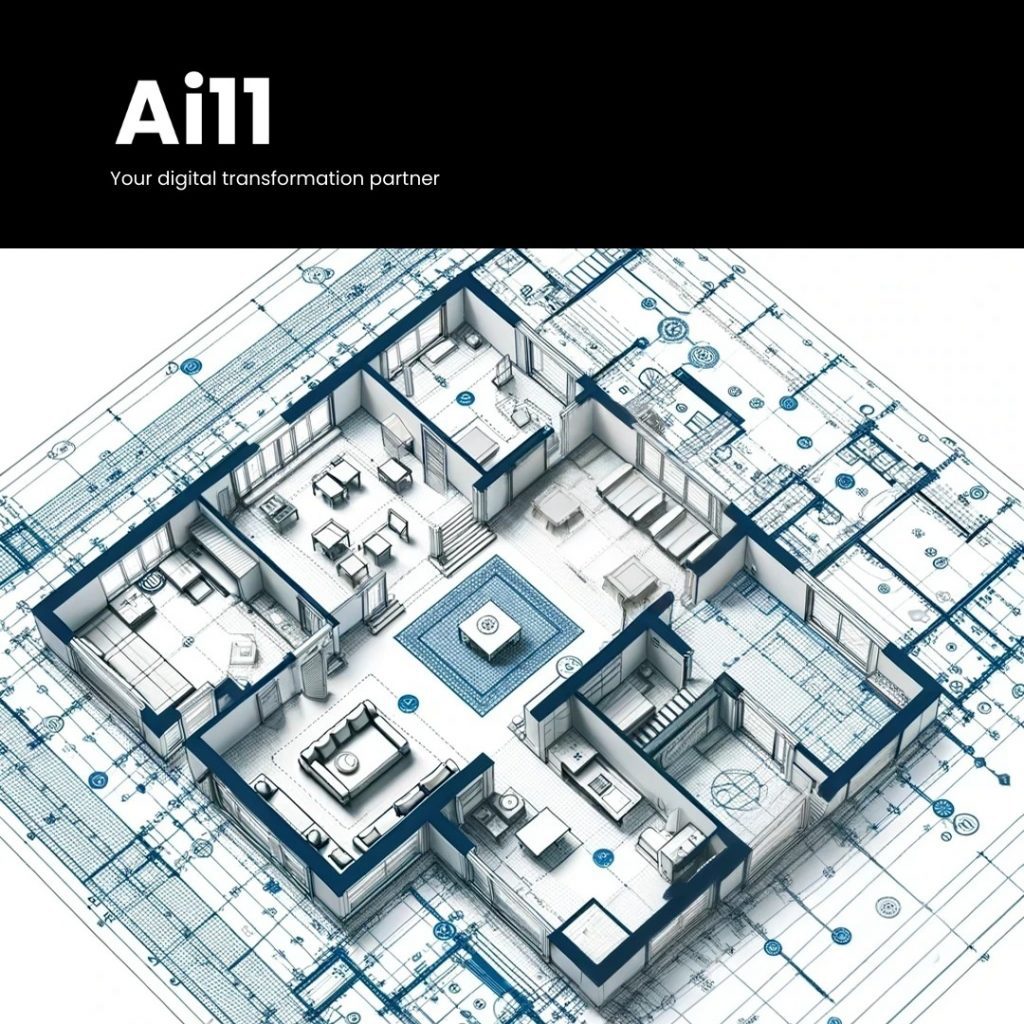
Introduction to Enterprise Architecture
Enterprise architecture plays a crucial role in the success of any business. It provides a strategic framework that aligns an organization’s business objectives with its technology infrastructure. By effectively planning enterprise architecture, businesses can streamline their operations, enhance their agility, and achieve their long-term goals. In this comprehensive guide, we will explore the key components of enterprise architecture, various frameworks used in its planning, and the steps to successfully implement it.
The Importance of Enterprise Architecture in Business
In today’s rapidly evolving business landscape, organizations need to adapt quickly to stay competitive. Enterprise architecture provides a structured approach to managing complexity and change within an organization. It ensures that business processes, data, technology, and people are aligned to achieve business goals. By having a clear understanding of the current state and future aspirations, enterprise architecture enables organizations to make informed decisions, optimize resource allocation, and identify areas for improvement. It also helps in mitigating risks, improving operational efficiency, and fostering innovation.
Key Components of Enterprise Architecture
Enterprise architecture consists of several key components that collectively define the structure and operation of an organization. These components include business architecture, data architecture, application architecture, and technology architecture.
- Business Architecture: Business architecture focuses on understanding the organization’s business strategies, goals, processes, and functions. It defines the relationships between various business units, identifies key stakeholders, and determines how the organization creates value.
- Data Architecture: Data architecture deals with the organization’s data assets, including the data models, data flows, and data storage mechanisms. It ensures that data is captured, stored, and utilized effectively to support business operations and decision-making processes.
- Application Architecture: Application architecture refers to the design and structure of the organization’s software applications. It includes the identification of application components, their interactions, and the technologies used to develop and integrate them. Application architecture ensures that software applications are aligned with business requirements and can effectively support business processes.
- Technology Architecture: Technology architecture focuses on the underlying technology infrastructure of an organization. It includes hardware, networks, operating systems, and other technology components. Technology architecture ensures that the organization’s technology assets are reliable, scalable, and aligned with business needs.
Types of Enterprise Architecture Frameworks
To effectively plan enterprise architecture, organizations can leverage various frameworks that provide a structured approach to its development and implementation. Some commonly used enterprise architecture frameworks include TOGAF (The Open Group Architecture Framework), Zachman Framework, and Federal Enterprise Architecture Framework (FEAF).
- TOGAF: TOGAF is one of the most widely adopted enterprise architecture frameworks. It provides a comprehensive approach to enterprise architecture planning, development, and governance. TOGAF consists of several phases, including Architecture Vision, Business Architecture, Data Architecture, Application Architecture, and Technology Architecture. It also provides guidelines, templates, and best practices for implementing enterprise architecture.
- Zachman Framework: The Zachman Framework is a holistic framework that helps organizations understand and document the various aspects of enterprise architecture. It defines six perspectives or viewpoints, including What, How, Where, Who, When, and Why. The framework provides a structured approach to capturing and organizing enterprise architecture artifacts.
- FEAF: The Federal Enterprise Architecture Framework (FEAF) is specifically designed for government organizations. It provides a standardized approach to enterprise architecture planning and implementation. FEAF consists of five reference models, including Performance Reference Model, Business Reference Model, Data Reference Model, Application Reference Model, and Technology Reference Model.
Steps to Successfully Plan Enterprise Architecture
Planning and implementing enterprise architecture requires a systematic approach. Here are the key steps involved in successfully planning enterprise architecture:
- Understand the Business Context: Start by gaining a deep understanding of the organization’s business context, including its goals, strategies, and challenges. This will help in aligning enterprise architecture with the organization’s objectives and priorities.
- Define the Scope: Clearly define the scope of enterprise architecture, including the business units, processes, systems, and technologies that will be covered. This will ensure that the enterprise architecture effort is focused and targeted.
- Assess the Current State: Conduct a thorough assessment of the organization’s current state of architecture. Identify the strengths, weaknesses, opportunities, and threats. This will provide a baseline for future improvements and help in identifying areas that require immediate attention.
- Develop the Target State: Based on the assessment, develop a target state architecture that aligns with the organization’s strategic goals. This includes defining the desired future state of business processes, data, applications, and technology.
- Identify Gaps and Roadmap: Identify the gaps between the current state and the target state. Develop a roadmap that outlines the steps required to bridge these gaps. Prioritize the initiatives based on their business value, feasibility, and dependencies.
- Implement and Govern: Implement the planned initiatives in a phased manner, following the roadmap. Establish governance mechanisms to ensure that the enterprise architecture remains aligned with the organization’s goals and objectives. Regularly monitor and evaluate the progress, making necessary adjustments as required.
Best Practices for Implementing Enterprise Architecture
Implementing enterprise architecture can be a complex undertaking. To ensure success, consider the following best practices:
- Engage Stakeholders: Involve key stakeholders from all levels of the organization throughout the enterprise architecture planning and implementation process. This will help in gaining buy-in, addressing concerns, and ensuring that the enterprise architecture meets the needs of the organization.
- Take an Agile Approach: Adopt an agile approach to enterprise architecture planning and implementation. Break down the initiatives into smaller, manageable chunks that can be delivered incrementally. This will allow for faster results, better adaptability to changing business needs, and early value realization.
- Ensure Executive Support: Obtain strong executive support for the enterprise architecture initiative. Executives play a critical role in providing the necessary resources, removing roadblocks, and championing the enterprise architecture effort across the organization.
- Promote Collaboration: Foster collaboration and communication among different business units, IT teams, and stakeholders involved in the enterprise architecture planning and implementation. This will help in breaking down silos, aligning diverse perspectives, and ensuring a cohesive approach.
- Continuously Monitor and Evaluate: Regularly monitor and evaluate the effectiveness of the implemented enterprise architecture. Collect feedback from users, identify areas for improvement, and make necessary adjustments to ensure that the enterprise architecture remains relevant and valuable.
Challenges and Solutions in Enterprise Architecture Planning
While planning and implementing enterprise architecture can bring significant benefits, there are also challenges that organizations may encounter. Some common challenges include:
Lack of Executive Support: Enterprise architecture requires strong executive support to succeed. Lack of support can lead to limited resources, resistance to change, and difficulties in driving alignment across the organization.
- Solution: Engage executives early on, demonstrate the value of enterprise architecture, and involve them in decision-making processes.
Complexity and Scale: Enterprise architecture involves managing complexity and scale. Organizations often struggle with the sheer volume of data, the interdependencies between systems, and the need to balance short-term priorities with long-term goals.
- Solution: Break down the enterprise architecture effort into manageable phases, prioritize initiatives based on business value, and ensure a clear roadmap.
Resistance to Change: Implementing enterprise architecture requires changes in processes, systems, and behaviors. Resistance to change can hinder progress and adoption.
- Solution: Communicate the benefits of enterprise architecture, involve stakeholders throughout the process, and address concerns and misconceptions proactively.
Lack of Skills and Expertise: Enterprise architecture planning and implementation require a diverse skill set and expertise. Organizations may struggle to find individuals with the necessary knowledge and experience.
- Solution: Invest in training and development programs, leverage external consultants and experts, and encourage knowledge sharing and collaboration.
The Future of Enterprise Architecture
As organizations continue to face complex challenges and rapid changes, the role of enterprise architecture will become increasingly critical. It provides a structured approach to managing complexity, aligning business and technology, and driving innovation. By effectively planning and implementing enterprise architecture, organizations can achieve strategic goals, optimize resource allocation, and stay ahead of the competition. The future of enterprise architecture lies in its ability to continuously adapt, innovate, and deliver value in an ever-evolving business landscape.
Ready to unlock the full potential of your organization? Contact our experts today to explore how enterprise architecture can drive your business success.

